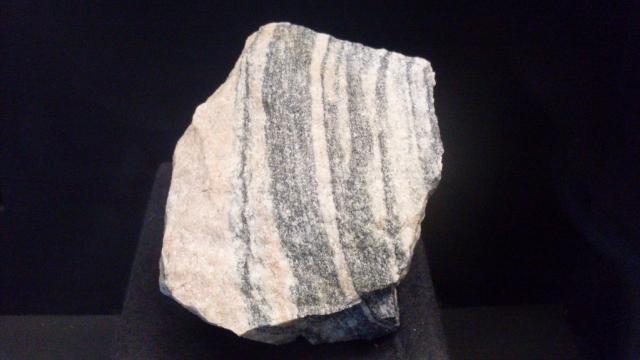Some of the Earth’s oldest rocks may have formed from the high temperatures of meteorite impacts, a new study reports.
Granite-like, or felsic, rocks in northwest Canada dating back to the Earth’s earliest era seem to have different compositions from the felsic rocks at the cores of the continents. New computer modelling suggests that meteorite impacts would perfectly explain this differing rocky makeup.
“Given the predicted high flux of meteorites in the late Hadean,” the hellish era just after the Earth formed, from 4.6 billion to 4.0 billion years ago, “impact melting may have been the predominant mechanism that generated Hadean felsic rocks,” the authors write in the new paper published in Nature Geoscience.
The rocks in question are the 4.02-billion-year-old Idiwhaa gneisses found in the Acasta Gneiss Complex of Northwest Canada. They seem to have a clearly different composition from the “tonalite–trondhjemite–granodiorite” rocks that often occur in the oldest, most stable parts of continents — the Idiwhaa gneisses have less silica, and way more of certain iron-containing molecules.
It looked to the geologists as though the rocks had been formed through a partial melting of other older basalt-like “mafic” rocks.
How did these rocks end up so different-looking? The age of these Idiwhaa gneisses implies that they were formed during a period of high meteor bombardment. Perhaps meteorites caused the partial melting, forming these gneiss rocks.
The researchers first plotted the properties of these rocks, such as their composition, temperature, pressure, and how much they needed to melt in order to form. Then they ran computer meteorite impact simulations of a 10km-wide meteorite hitting a mafic crust at 12 to 17km/s. At distances between 10 and 50km from the impact and at depths of 3km, the conditions seemed ripe to form these rocks, with temperatures reaching 800 to 900C.
“The idea of making felsic melts by large or giant impacts seems plausible considering the high-energy nature of these events and the pockmarked ancient surfaces of other inner Solar System planets and moons,” Balz Kamber from Trinity College Dublin, who was not involved in the study, said in a statement.
This requires the assumption of a mafic crust; you can read our discussion of the early Earth’s composition here. And obviously this study is based upon computer modelling — we don’t know for sure what early Earth was like. Perhaps further experiments or studies of other planets could help bolster the evidence for this meteorite-impact theory.
But the truth is, it isn’t so surprising. We call our planet’s earliest era the Hadean because it was likely quite hellish. Incredible meteorite impacts wouldn’t be out of place.
